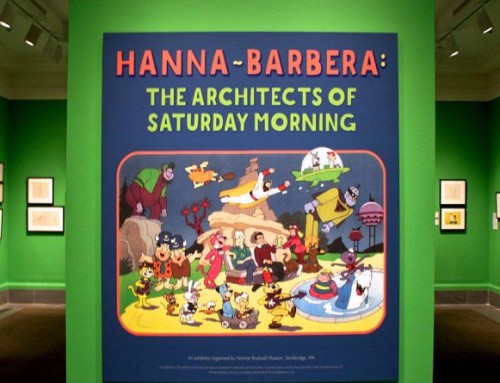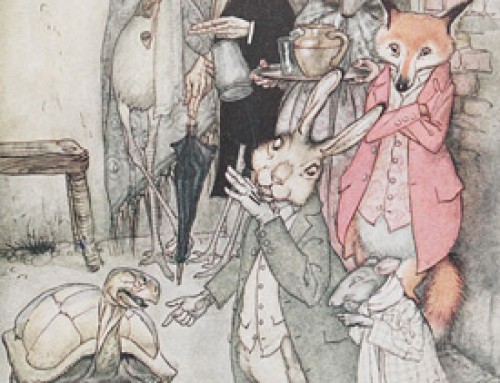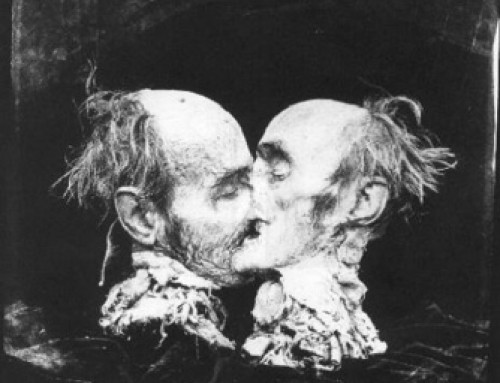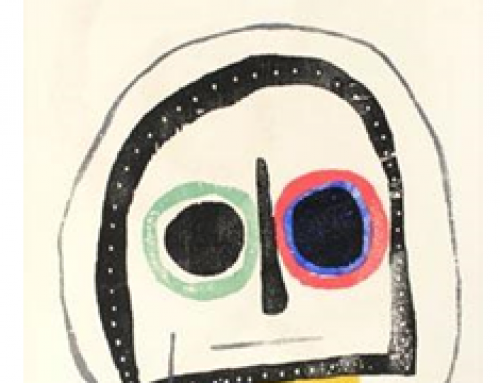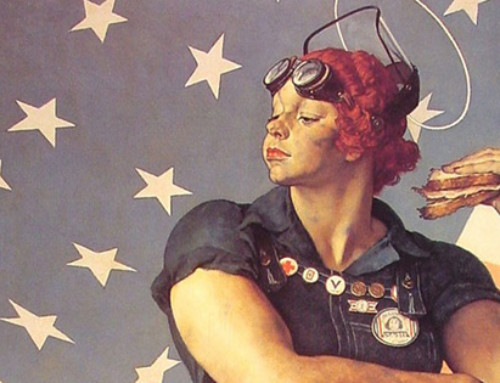By Danny Torres, grad student MICA’s MFA Illustration Practice, Fall 2013 Critical Seminar Final Paper.
Pictorial images as a form of communication have existed since the dawn of man, from the cave paintings in Lascaux, to Egyptian hieroglyphics,the stone inscriptions of Mesoamerica. Sequential narrative is nothing new. This paper will provide an overview of the rise and impact of the modern comic book. There are different eras of modern sequential narrative, with the earliest examples starting around the 1500s. This paper will document the rise of the superhero starting with the Golden Age. Although they these eras all hold their own importance and significance, I believe that the birth of the superhero is what has carried this medium from the first superhero appearance in the 1930’s, to the present day.
The Golden Age
The term comic refers to the original subject matter produced in these early anthologies of sequential art. Newspaper companies would make collections of their humor strips, and eventually they came up with the idea to compile them and sell single editions of these works. Eventually the subject matter of these anthologies extended to all types of genres, but the name “comics” remained. Early non-humorous comics told stories in the style of pulp fiction and film noir movies of the time. What changed the industry and launched a cultural revolution was the creation of a hero that defied physics and thrilled the imaginations of generations since his creation: Superman.
Jerry Siegel and Joe Shuster created Superman in Cleveland, Ohio in the 1930’s. They sold their creative rights to DC Comics for $ 130. DC’s executives were hesitant about publishing a preposterous story of a godlike, alien, humanoid in tights, but they gave it a chance, and it was an overnight success, spawning imitators across the industry, although none had the same commercial appeal and success as the original. Timely Comics, now Marvel Comics, created Captain America, Sub Mariner and the Human Torch. Fawcett Comics created Captain Marvel. DC even jumped on its own bandwagon and created Batman, The Flash, Green Lantern and Wonder Woman. There was no better form of storytelling for these stories than comics; it was the perfect medium for these surreal adventure stories. The movie and radio industry’s limiting technology impaired them from being as effective or believable. The early superhero stories dealt with issues like petty crooks, greedy capitalists, and corrupt politicians, but it didn’t take long for the world to change the subject matter of these stories drastically.
World War II Years
Jack Kirby and Joe Simon were making comics about a Hitler-like dictator in Europe raising hell and starting a war months before all this actually manifested in real life. There were even comics depicting Asian armies bombing U.S. military bases in the Pacific months before Pearl Harbor. Needless to say, the world was changing, and so were comics. What better super villain and forces of evil to fight off and beat than Hitler and the Nazis? It was a scary time in the U.S. but also an optimistic time, bringing a lot of people back to work and lifting the nation out of its depression. Comics dealing with war and soldiers like Captain America flourished. During these years, the stories were patriotic and supported democratic ideals. They even encouraged young readers to participate in the war effort by collecting scrap metal and leftover machine oil.
The Comics Code and Censorship
Eventually the war ended, and there had to be a new story to tell. Up until this time, comics had not been subject to any sort of regulation. With the end of WWII, comic creators looked to find new subject matter. The stories became grotesque and violent, and the comic stands were selling out. A new genre dominated the industry, led by a series called Crime Does Not Pay, printed by Lev Gleason Publications. These stories were composed of detailed, gruesome accounts of infamous criminals and their sins against society. The moral of the story always was that crime doesn’t pay, and the main character always ended up in jail or the electric chair. This didn’t stop parents and schools from revolting against the subject matter. In real-life news stories about young children doing horrendous things, they all seemed to have a comic book collection, so parents felt that comics were tainting their kids. Comic book burnings occurred in schoolyards, and citywide bans took place. In this decade, comic books were a common household item. There were not many other forms of entertainment other than radio and the movies. Comics were cheap and accessible to young children and adolescents. It is human nature for young kids and adolescents to do stupid things; some do dumber things than others. If preposterous enough, these acts eventually grab the attention of the media, and there will have to be someone or something to blame. In the 1950s, comic books were the scapegoat. Psychiatrists, parent organizations, and politicians debated how the comics were damning the youth and were behind the impending destruction of society as they knew it. All this uproar led to the creation of the Comics Code Authority in 1954. This self-imposed publishing organization drastically changed the voice of comics and restricted the limits of its creativity. Superheroes became bland and utilitarian; every hero in the DC universe was essentially the same character with the same predictable reactions and responses. Sales declined, but the industry carried on. It was not the most creative era in superhero comics, but other genres, Such as westerns, humor, and romance comics, thrived.
The Silver Age
The 1950s seemed like they would be the end of this medium, but they were followed up by a mini-renaissance, the Silver Age, which was led by the Marvel era. In thedocumentary With Great Power: The Stan Lee Story, Lee tells the story about how he was getting ready to quit the industry right before he created The Fantastic Four. He had started making comics in the 1940s, when he was 17; in the early 1960s Lee had been in the industry for about 20 years. The word “comics” was a bad word in the creative industry at the time, sales were poor, the Comics Code stifled creativity among writers and artists, and now comics had to compete with television. Lee’s wife suggested that before he quit, he try to work on something he would enjoy writing. Stan Lee thought that it might be worth trying since he was going to quit anyway. So he decided to have some fun. The result was The Fantastic Four. Conceived at the dawn of the space age and during the Cold War, it told the story of a family, led by scientist Reed Richards, who wanted to beat the Russians to space. This family made it to space and in the process was exposed to cosmic rays that gave them super powers. What was different about these heroes was that Stan Lee didn’t want them to hide their identities, and he gave them humanistic qualities. They bickered with each other and sometimes acted neurotically so that they were a sharp contrast to the heroes of their competitors at DC Comics. This era gave birth to Spiderman, The X-men, Thor, Iron Man, and The Hulk. These new creations of Stan Lee were different from the superheroes that cam befor them because they were more complex and realistic than their predecessors. Spiderman was probably the most original and influential character created since Superman. He changed the way superheroes were perceived; they were no longer immortal demigods, but human and broken people to which the average young reader could relate. Marvel’s sales skyrocketed, even surpassing industry giant DC. DC, of course, had to change to keep up, launching socially conscious titles like Green Lantern/Green Arrow. Comica began to mature; the characters were more intropective and the stories were more sociall aware. Storylines began to deal with civil rights and the war in Vietnam, and once again started to question the ethics of the establishment. In addition, the readers weren’t just young children but they extended to older adolescents and young college students.
The Bronze Age
As all trends come and go, so too did the introspective, socially aware time of the Silver Age. Readers became bored with redundant subject matter, so that comics had to evolve. This era is said to begin at different times with different characters, but the consensus places it around 1970. This era is remembered for the update in the Comics Code Authority and character changes for many major comic characters. The Nixon administration asked Stan Lee to create a story addressing current the drug epidemic and the dangers of drug use. The story didn’t fit the Code’s guidelines but was published anyway. This was the moment that sparked some change, and the Comics Code Authority was updated and adjusted to fit the more liberal times.
The Modern Age The new changes in the Comics Code’s guidelines were for the better. Creative people in the industry spread their wings and made beautiful work. Creators like Alan Moore, Frank Miller, Neil Gaiman, and Grant Morrison pushed the medium to new levels, treating the readers like adults and making timeless work. This era is dubbed the “grim and gritty era” because it was the birth of the anti-hero and the glorification of the dark vigilante. Characters became more righteous in a sense, concerning themselves not with the law but with what was right and wrong and taking extreme measures to bring justice. A good story to highlight this era would be Frank Miller’s The Dark Knight Returns, which takes place in a future Gotham City, with an old Bruce Wayne retired from crime fighting for many years. Fed up with the lawlessness that has been unleased on Gotham, Wayne returns to his role as Batman with a vengeance, to say the least. This is not Batman as he had been in an earlier incarnation—he is tougher breaking bones and kicking ass, and I wouldn’t have it any other way. A dark psychology encompasses the era; many other antiheroes were spawned and quickly glorified. Comics became entertaining again, taking the best qualities of their predecessors and pushing these stories further to different levels. I remember getting lost in these books as a kid and I still do today if the story is compelling enough. 2000s and Beyond The new millennium brought many changes in the Modern Age of comics. With 9/11 and the collapse of the twin towers, comic creators and the nation were left to come to terms with horrific acts of hatred and terrorism. One of my favorite comics to address this was an issue of The Amazing Spiderman. He was the perfect character to do so, being a proud New Yorker–what character could better reflect on the monstrosities committed against his city? That event changed the world and instilled a sense of patriotism in comics similar to those from the World War II era. The most touching part of this period in comics was the industry’s celebration of real-life heroes, the brave firemen, policemen, and citizens of New York. Commemorative editions of comics and prints were released with art by the superstars of the industry, with all the proceeds going to the families of the victims and other causes related to the tragedy. The past decade also saw the trend of the comic book movie rise to full force. The genre in the movie industry has been attempted over the decades, but never with the same success as it has in recent years. A good example is 2008’s The Dark Knight, which made $1,004,558.44 in the box office. The changes in special effects technology and a new generation of filmmakers who were themselves raised in the culture, the genre has never been so commercially successful. I believe the future is bright for this form of sequential art. Comic book sales might never be what they once were, but with the success of movies and video games, this cultural phenomenon might still have its best days ahead. Bibliography Wright, Bradford W. Comic Book Nation: The Transformation of Youth Culture in America. (Baltimore, MD: Johns Hopkins University Press, 2003) McCloud, Scott. Understanding Comics. (New York: HarperPerennial, 1994) With Great Power: The Stan Lee Story. Dir. Terry Dougas, Nikki Frakes, and Will Hess. Perf. Stan Lee. (1821 Pictures/Emerging Entertainment, 2010) “The Dark Knight (2008) – Box Office Mojo.” The Dark Knight (2008) – Box Office Mojo. https://boxofficemojo.com/movies/?id=darkknight.htm 17 Dec. 2013.


